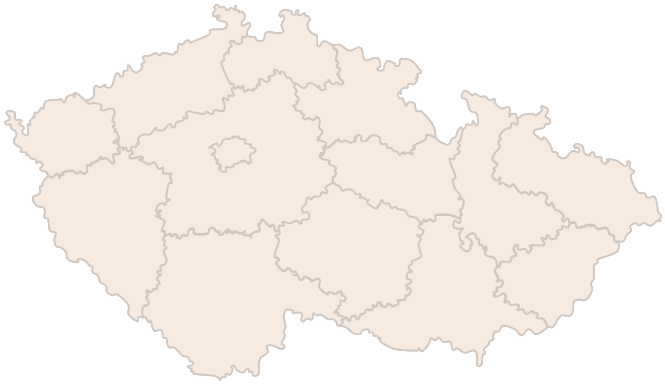What is the state budget and what rules does it follow
The state budget is the annual plan for the state’s economy – a summary of all planned state budget revenues and all state budget expenditures. The budget can be balanced, in surplus or in deficit. If expenditure exceeds revenue, a deficit is created – the difference that the state has to finance, usually with debt.
The Budget Law regulates the creation of the budget, which also sets out the basic concepts and limits for the management of state finances. The Chamber of Deputies then annually approves the state budget law for the year.
Are you solving a similar problem?
Not sure how to do your taxes properly so you don't get it wrong?
We can help you navigate the law, whether it’s dealing with a specific tax situation, preparing for an audit by the tax authority or defending yourself in court.
I want to consult
- When you order, you know what you will get and how much it will cost.
- We handle everything online or in person at one of our 6 offices.
- We handle 8 out of 10 requests within 2 working days.
- We have specialists for every field of law.
State budget revenue
State budget revenues are not just taxes. In 2025, revenues of CZK 2,086 billion are planned and consist of three large groups:
- Tax revenues of the state budget – mainly VAT, corporate income tax, personal income tax and excise duties.
- Revenue from compulsory social security contributions – pension and sickness insurance premiums and the contribution to the state employment policy.
- Other revenue – non-tax revenue (fees, property income, etc.), capital revenue (e.g. sales of assets) and transfers received, often from the EU.
Tip for article
Who has to pay social insurance, where and how much? And where does all this money go? Find out in the next article.
Tax revenue of the state budget
In 2025, tax revenues will amount to approximately CZK 1 030 billion. The largest item is VAT – CZK 414 billion. Next, corporate income tax – CZK 244 billion, personal income tax – CZK 184.7 billion and excise duties – CZK 161 billion. Smaller items include gambling and lottery levies and other taxes. Tax revenues thus clearly show that VAT and income taxes bear the majority of the tax burden on the budget.
Beware of a common misconception: not all taxes collected stay with the state. The redistribution of some taxes between the state, counties and municipalities is determined by the law on the budgetary determination of taxes. That’s why we talk about shared taxes – typically VAT or income taxes, the proceeds of which are shared.
Social security contributions
In addition to taxes,social security premiums are a huge package – CZK 809 billion in 2025, including pension and sickness insurance premiums and contributions to the state employment policy. This money goes into the state budget and is used to pay, for example, pensions and sickness benefits.
To be clear: health insurance does not belong to the state budget – it is administered by health insurance companies and is a separate pillar of public finances. However, the state makes a significant contribution by paying for the so-called state insured (children, the elderly, the unemployed, etc.).
Other revenues and transfers
In addition to taxes and insurance premiums, the budget expects non-tax revenues of around CZK 38 billion, capital revenues of around CZK 34 billion and transfers received (mainly from the EU) of around CZK 172 billion. The EU’s Recovery Facility(NGEU), for example, plays a large role in transfers received.
State budget expenditure
State budget expenditure for 2025 amounts to CZK 2 327 billion. There are two types of expenditure: mandated expenditure (legally obligatory) and non-mandated expenditure:
- Mandatory expenditure: refers to expenditure that the state is legally obliged to pay (e.g. pensions, sickness benefits, payments by the state for state insured persons to the public health insurance system, etc.).
- Non-mandatory expenditure: this expenditure is normally incurred by the state but is not legally bound to a fixed amount (e.g. part of investment, operating expenditure of authorities).
Mandatory and ‘quasi-mandatory’ items (e.g. salaries in certain components, commitments to the EU) together account for more than 80% of expenditure in 2025. In this group are pensions, sickness benefits, social assistance, state payments to health insurance, interest on debt and other expenditure arising directly from laws or international commitments.
Social benefits: the biggest item of government expenditure
Social benefits are the largest expenditure item. In 2025, they account for 39% of all spending, or around CZK 915 billion. Of this, pensions alone account for CZK 717 billion (excluding administrative costs). It also includes state social assistance and foster care benefits (around CZK 61 billion), sickness benefits (CZK 47 billion), care allowances (CZK 45 billion), assistance in material distress (CZK 14 billion), armed forces special benefits (CZK 14 billion) and smaller programmes.
What does this mean for sustainability? Pension revenues have not been sufficient to fully cover pension expenditure for a long time.
Salaries, health and interest: where the next big money is going
Apart from social benefits, the top expenditures include: salaries and allowances in state organisational units and contributory organisations – around CZK 382 billion, state payments to the public health insurance system – CZK 154 billion, contributions to the EU budget – CZK 65 billion, servicing the state debt – CZK 100 billion and, of course, investments (capital expenditure) – around CZK 250 billion.
Investments and state funds: not everything runs through ministerial chapters
A significant part of transport investments is provided by the State Fund for Transport Infrastructure (SFDI), which for 2025 foresees revenues and expenditures of CZK 153 billion. In addition to the SFDI, there are other state funds (environment, agriculture, culture, etc.) which have their own budgets and often combine state subsidies, fees and EU money.
State budget revenue and expenditure in figures: a look at 2025
For the sake of clarity, let us summarise the most important projected figures for 2025:
- State budget revenue: CZK 2 086 billion.
- State budget expenditure: CZK 2 327 billion.
- Balance (state budget deficit): CZK -241 billion.
- The largest tax source – VAT: CZK 414 billion.
- Social security contributions: CZK 809 billion.
- Total social benefits: CZK 915 billion (of which pensions CZK 717 billion).
- Servicing the national debt: about CZK 100 billion.
What does not count as tax revenue for the state budget
Tax revenues of the state budget are not the same as all taxes collected in the Czech Republic. Some taxes (e.g. real estate tax) are the exclusive revenue of municipalities. For many other taxes (e.g. VAT or income tax), the revenue is divided between the state, regions and municipalities according to the law on budgetary determination of taxes.
Therefore, it is crucial for the state budget how the state’s share of shared taxes is set, and for municipalities and regions how much of it goes to them.
Monthly implementation: tracking the budget throughout the year
Although the state budget law is passed once a year, the Ministry of Finance publishes a monthly report on the implementation of the state budget. This gives you a quick answer to the question of whether the plan is on track. In 2025, the finance ministry reported a deficit of CZK 152 billion at the half-year and CZK 165 billion in August.
These reports always compare revenues and expenditures with the previous year and highlight what is driving the improvement or deterioration (mainly higher tax and insurance collections in 2025, more modest growth in spending).
How laws translate into revenue and expenditure
The budget is not just a sum of numbers, but a reflection of policy and law. An example is the consolidation package effective from 2024, which changed some rates, discounts or exemptions for taxes and social insurance contributions, so that the state budget tax revenues and insurance premiums in 2025 look different than before.
Another example is the budgetary determination of taxes – how much of the VAT or income tax will go to municipalities and counties. Changing the redistribution keys may boost local government budgets but at the same time cut the state, which will necessarily be reflected in state budget revenues.
State budget deficit: what exactly does it mean and how is it covered
The state budget deficit is simply the balance: state expenditure minus state revenue. A deficit of CZK 241 billion has been approved for 2025, with revenues of CZK 2 086 billion and expenditure of CZK 2 327 billion.
How does the state finance the deficit? It issues state bonds or borrows/loans – these are what make up the state debt under the budget rules. The budget for 2025 foresees about CZK 100 billion just for servicing the state debt (interest and related costs).
Summary
The state budget is an annual plan of revenue and expenditure. For 2025, it foresees revenues of CZK 2 086 billion and expenditure of CZK 2 327 billion, i.e. a deficit of CZK -241 billion. Revenues consist mainly of taxes (CZK 1 030 billion; of which VAT 414, corporate income tax 244, personal income tax 184.7 and excise duties 161 billion), social security contributions (CZK 809 billion) and other revenues including European transfers. Not all taxes are a net revenue of the state – part of the revenue is shared with municipalities and regions according to the budget designation of taxes.
On the expenditure side, mandatories and quasi-mandatories dominate (over 80% of expenditure): social benefits CZK 915 billion (of which pensions CZK 717), state salaries around CZK 382, state payments to public health insurance CZK 154, and servicing the national debt around CZK 100 billion; investments amount to around CZK 250 billion.
Health care is largely financed outside the state budget through health insurance companies. The deficit is mainly covered by the issuance of government bonds and the evolution of budget execution is monitored monthly (e.g. August 2025: deficit of about CZK 165 billion); changes in tax laws and in the behaviour of the economy can continuously adjust tax collection.
Frequently Asked Questions
Is health care paid for out of the state budget?
For the most part, no – health care is financed by public health insurance. Although the state contributes significantly by paying for the state insured (roughly CZK 154.6 billion in the 2025 budget), most of the money for health care goes outside the state budget.
Does the state automatically get more money when VAT is increased?
Not always. In the case of taxes, the revenue is not only shared between the state and local governments, but the outcome can also be influenced by consumer behaviour (e.g. a drop in demand at higher rates) and economic developments. Therefore, tax revenues for the state budget are planned carefully and monitored on an ongoing basis.
What happens if the House of Commons fails to pass the state budget law on time?
Budgetary provisionality comes into play. Expenditure then operates in a limited mode and the government temporarily manages the economy according to the previous year’s twelfths.
What is quasi-mandatory expenditure?
Expenditure that is not directly determined by law but is difficult to change quickly (e.g. salaries or EU commitments).
What is the difference between the nominal and the real budget comparison?
In nominal terms, the amounts are compared at current prices; in real terms, they are adjusted for inflation.




